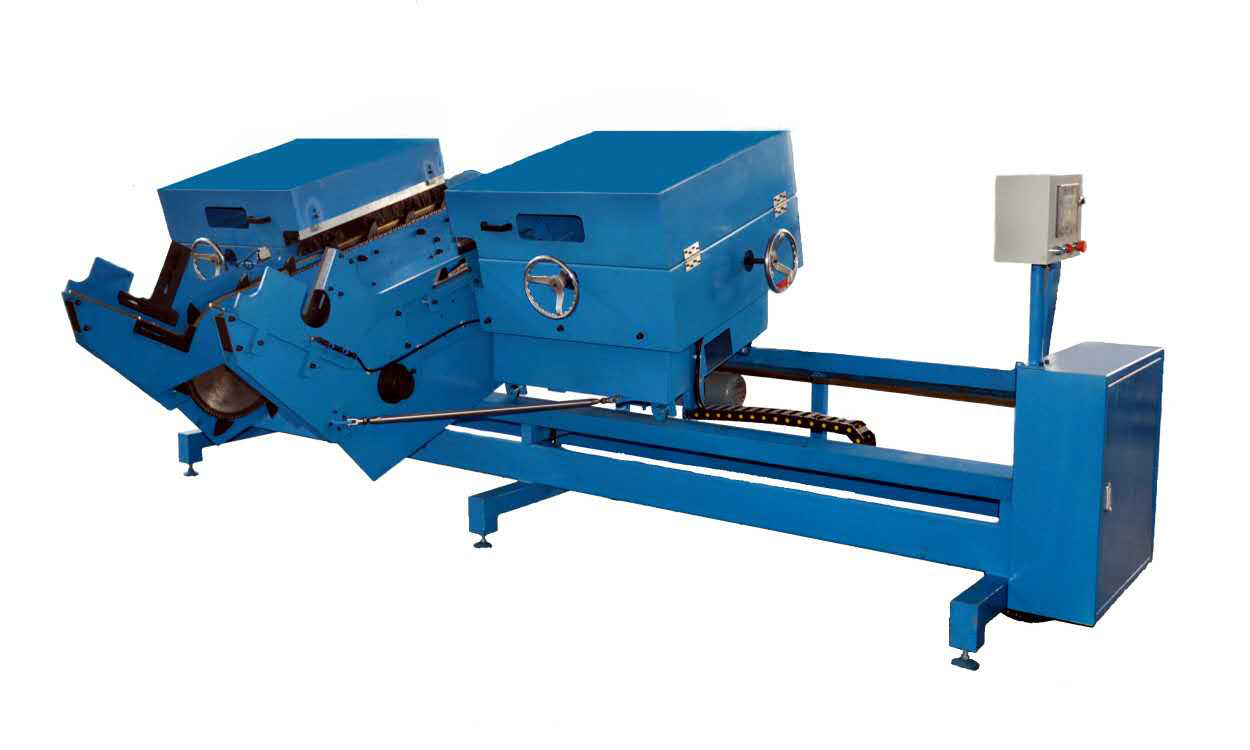How to choose the right high speed steel saw blade

(a) Choice of diameter
The diameter of the saw blade is related to the size of the pipe cutter or fully automatic pipe cutter used and the size of the sawing workpiece. The saw blade has a small diameter and a relatively low cutting speed; the large saw blade diameter requires high saw blade and sawing equipment, and the sawing efficiency is also high. The outer diameter of the saw blade is selected according to the different circular saw model.
(2) Choice of thickness
The thickness of the saw blade is theoretically we hope that the thinner the saw blade, the better, the kerf is actually a kind of consumption. The outer diameter of the saw blade and the material to be sawed determine the thickness of the saw blade. If the thickness is too thin, the saw blade will easily sway when it is working, which will affect the cutting effect. The thickness of the saw blade should be chosen from the stability of the saw blade work and the material being sawed. The thickness required for some special-purpose materials is also specific and should be used according to equipment requirements, such as slotted saw blades.
(3) Choice of aperture
The aperture is a relatively simple parameter, which is mainly selected according to the requirements of the equipment. At present, the standard aperture designed in China is 32MM, and some imported equipment also has 25.4MM hole. Regardless of the size of the hole, it can be modified by lathe or wire cutter. The lathe can be placed in the large hole of the car washer, and the wire cutter can be reamed to meet the requirements of the equipment.
(4) Choice of the number of teeth
The number of teeth of the serration, generally speaking, the more the number of teeth, the more cutting edge in a unit time, the better the cutting performance, but the serration is too dense, the amount of chipping between the teeth becomes small, which easily causes the saw blade to heat up; When the feed amount is improperly matched, the cutting amount per tooth is small, which will aggravate the friction between the cutting edge and the workpiece and affect the service life of the cutting edge. If the serration is too thin, the distance between the teeth is large, and the impact between the cutting edge and the workpiece is large, which will cause the blade to jump and affect the service life of the blade. A reasonable number of teeth should be selected according to the sawing material.
(5) Choice of tooth shape
The toothed shape has angular teeth, curved back teeth, left and right teeth (alternating chamfers), high and low teeth, and rare combined teeth. The combined tooth is a combination of two tooth shapes, and the grinding is complicated. The most used are the left and right teeth.
(6) Choice of sawtooth angle
The angle parameter of the sawtooth part is more complicated and professional, and the correct choice of the angle parameter of the saw tooth is the key to determining the quality of the sawing. The main angle parameters are the front and back angles. The rake angle is the plunging angle of the sawtooth. The front angle mainly affects the force consumed by the sawing material. The larger the rake angle, the better the sharpness of the sawtooth cutting. The lighter the cutting, the more labor-saving the feeding. Generally, when the material to be processed is soft, a larger front angle is selected, and a smaller front angle is selected. The back angle is the angle between the sawtooth and the machined surface. The function is to prevent the sawtooth from rubbing against the machined surface. The larger the back angle, the smaller the friction and the smoother the cut. The chamfer should not be too small, it plays a role in maintaining the durability and heat dissipation of the teeth. The angle of the serration is the position of the serration when cutting, and the angle of the serration affects the performance of the cutting.
The diameter, thickness, aperture, number of teeth, tooth shape, angle, and other parameters of the saw blade are combined into a saw blade. It is necessary to select and match it to better exert its performance.
The diameter of the saw blade is related to the size of the pipe cutter or fully automatic pipe cutter used and the size of the sawing workpiece. The saw blade has a small diameter and a relatively low cutting speed; the large saw blade diameter requires high saw blade and sawing equipment, and the sawing efficiency is also high. The outer diameter of the saw blade is selected according to the different circular saw model.
(2) Choice of thickness
The thickness of the saw blade is theoretically we hope that the thinner the saw blade, the better, the kerf is actually a kind of consumption. The outer diameter of the saw blade and the material to be sawed determine the thickness of the saw blade. If the thickness is too thin, the saw blade will easily sway when it is working, which will affect the cutting effect. The thickness of the saw blade should be chosen from the stability of the saw blade work and the material being sawed. The thickness required for some special-purpose materials is also specific and should be used according to equipment requirements, such as slotted saw blades.
(3) Choice of aperture
The aperture is a relatively simple parameter, which is mainly selected according to the requirements of the equipment. At present, the standard aperture designed in China is 32MM, and some imported equipment also has 25.4MM hole. Regardless of the size of the hole, it can be modified by lathe or wire cutter. The lathe can be placed in the large hole of the car washer, and the wire cutter can be reamed to meet the requirements of the equipment.
(4) Choice of the number of teeth
The number of teeth of the serration, generally speaking, the more the number of teeth, the more cutting edge in a unit time, the better the cutting performance, but the serration is too dense, the amount of chipping between the teeth becomes small, which easily causes the saw blade to heat up; When the feed amount is improperly matched, the cutting amount per tooth is small, which will aggravate the friction between the cutting edge and the workpiece and affect the service life of the cutting edge. If the serration is too thin, the distance between the teeth is large, and the impact between the cutting edge and the workpiece is large, which will cause the blade to jump and affect the service life of the blade. A reasonable number of teeth should be selected according to the sawing material.
(5) Choice of tooth shape
The toothed shape has angular teeth, curved back teeth, left and right teeth (alternating chamfers), high and low teeth, and rare combined teeth. The combined tooth is a combination of two tooth shapes, and the grinding is complicated. The most used are the left and right teeth.
(6) Choice of sawtooth angle
The angle parameter of the sawtooth part is more complicated and professional, and the correct choice of the angle parameter of the saw tooth is the key to determining the quality of the sawing. The main angle parameters are the front and back angles. The rake angle is the plunging angle of the sawtooth. The front angle mainly affects the force consumed by the sawing material. The larger the rake angle, the better the sharpness of the sawtooth cutting. The lighter the cutting, the more labor-saving the feeding. Generally, when the material to be processed is soft, a larger front angle is selected, and a smaller front angle is selected. The back angle is the angle between the sawtooth and the machined surface. The function is to prevent the sawtooth from rubbing against the machined surface. The larger the back angle, the smaller the friction and the smoother the cut. The chamfer should not be too small, it plays a role in maintaining the durability and heat dissipation of the teeth. The angle of the serration is the position of the serration when cutting, and the angle of the serration affects the performance of the cutting.
The diameter, thickness, aperture, number of teeth, tooth shape, angle, and other parameters of the saw blade are combined into a saw blade. It is necessary to select and match it to better exert its performance.



